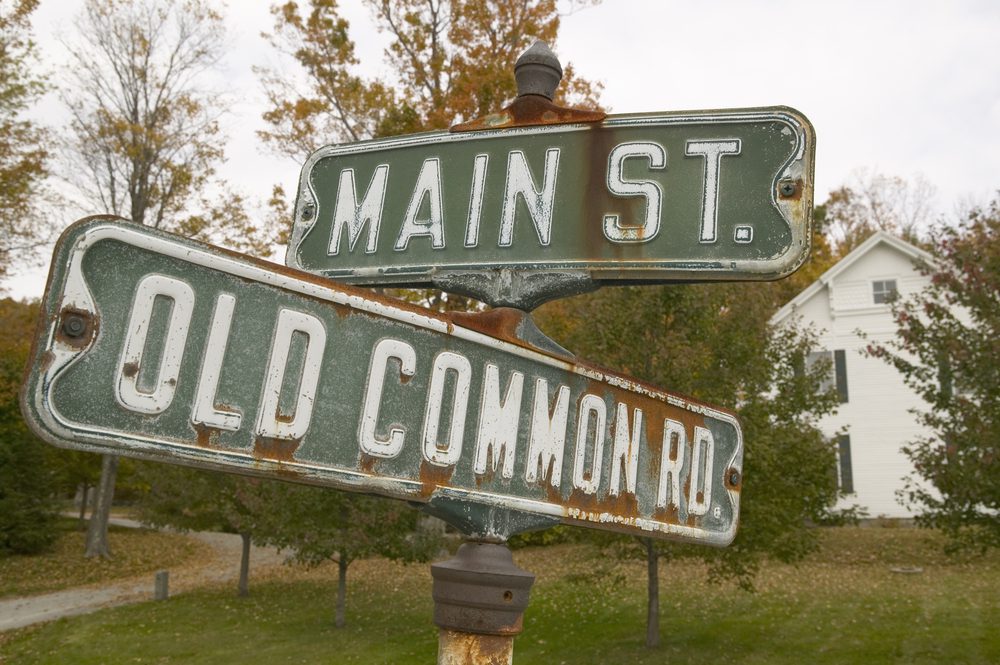Boldly Declaring That ‘I Am Alive and This is Where I Live’

I’ll give the coronavirus this: it got me out of going to Buffalo to see the touring company of Hello, Dolly.
Well, dark days call for silver linings, don’t they?
So when Governor Andrew Cuomo, obviously relishing the near-dictatorial powers he has assumed with nary a peep of protest, ordered the closing of bars, restaurants, theaters, and gyms, and proscribed gatherings of greater than 50 people—or was it 10?; I have trouble keeping up with the edicts—I revisited one of the stranger literary artifacts of our haunted region: the book-length blank-verse poem At Midnight on the 31st of March by Josephine Young Case.
Published in 1938, during what eventually might be called the First Great Depression, the book is about a little Upstate New York village, Saugersville, which at the stroke of midnight on the last day of March is suddenly, mysteriously, and seemingly irrevocably cut off from the rest of the world. Its two dozen homes, two churches, school, garage, mill, general store, and grange go dark. (Josephine’s father, Owen Young, was president of General Electric, and she takes great delight in turning out the lights in what I assume was a winking nod dadwards.)
Electric power is gone. The phones are dead. The roads leading out of town have disappeared. Search parties venturing beyond the settlement find only “the endless woods, the silent hills…and nowhere any house or any sign of man, there now or ever.”
There is “only Saugersville in all the world.” It’s an autarkist’s dream.
Recovering from the initial shock, the good folk of Saugersville take stock. They adapt. They relearn the old ways. Dairymen milk the cows by kerosene light instead of Alec-Tricity. Horses replace farm machinery. Thirsty for beer, they grow hops. Even scoffers head to church.
All is not sunshine and homey bliss. By the following winter influenza cuts through the village; lacking doctors and access to modern medicine, three residents die before “the plague diminished.”
There is a Spoon River Anthology quality to the poem, with its sensitively incised portraits of Saugersvillians reacting to their village’s isolation. Some find satisfaction in communal self-sufficiency, a few rue being stranded in hicksville, and the common lot just make do.
It’s look homeward or die, physically and spiritually. “Here is all,” resolves the resourceful young May Warder. There is no other place, no better place. I am reminded of a scene in Michael Cimino’s The Deer Hunter in which steelworkers Nick (Christopher Walken) and Mike (Robert DeNiro) drunkenly exchange confidences after their friend’s wedding on the weekend before they are to be shipped to Vietnam. Mike asks Nick if he thinks they will ever return. Nick says, “You know something? The whole thing. It’s right here. I love this f—ing place.”
Perhaps I ought not advert to a Hollywood movie, even one as good as The Deer Hunter, in discussing Case’s book, for among the blessings of the little village’s severance from the outside is that mass-manufactured culture is no longer imported. Something is lost, yet something is gained. A character recalls “When Saugersville set fashions for itself/I mean to say we had our own ways here/That weren’t the ways of Centerfield or Steck/Much less the ways of any city place/Where most of us had never been at all.”
Rum and Coke and Clark Gable no longer exist, yet the community consensus is that “life is harder than it used to be/But troubles are more real….We’re all of us more real, and more alive/And Saugersville is real, more like a town/And not a gas-pump on a concrete road.”
Admittedly, our situation today is disanalogous to that in Case’s poem. Televised agitprop from Team Blue and Team Red still pollutes our homes. But the response of ordinary folk to crisis is similar.
Although decades of post-nuclear war and zombie movies have conditioned us to expect all hell to break loose unless we are firmly guided by stern rulers, men and women in stressful times usually exhibit cooperative, even neighborly behavior. 
The toilet paper hoarders and elbow-throwing shoppers so beloved by TV reporters are atypical. “Despite Hollywood’s clichés to the contrary,” writes Reason’s excellent Jesse Walker, “it is very rare for people to panic during an emergency. And the typical natural or technological disaster is followed not by a Mad Max war of all against all but by mutual aid in the rubble. Crime declines. Bottom-up cooperation flowers. Looting is rare, and when it does occur it usually amounts to scavenging, not theft.”
In Saugersville, 11 months into the isolation, a young man of learning and ambition who chafes under the new dispensation has an epiphany as he skis the sloping fields outside the village:
“I am alive and this is where I live.”
The realization fills him with joy and gratitude. May we in these strange days experience our own revelations.
Bill Kauffman is the author of 11 books, among them Dispatches from the Muckdog Gazette and Ain’t My America.
Comments